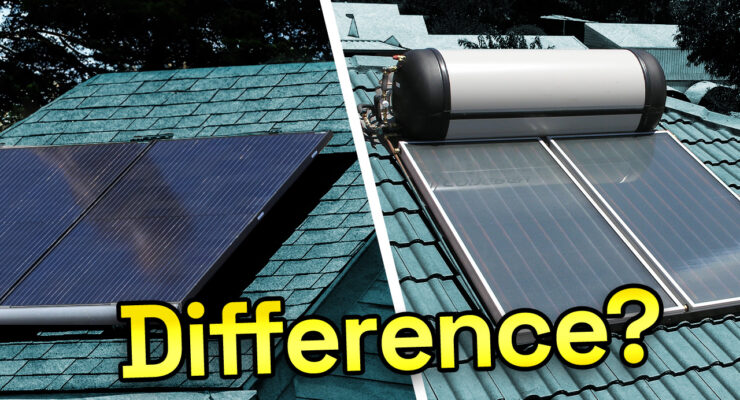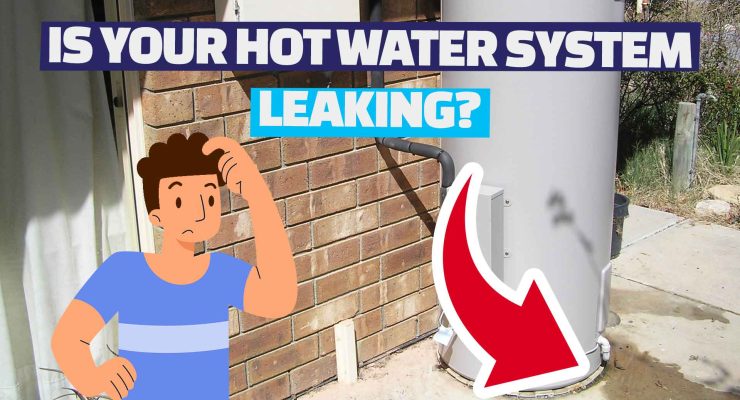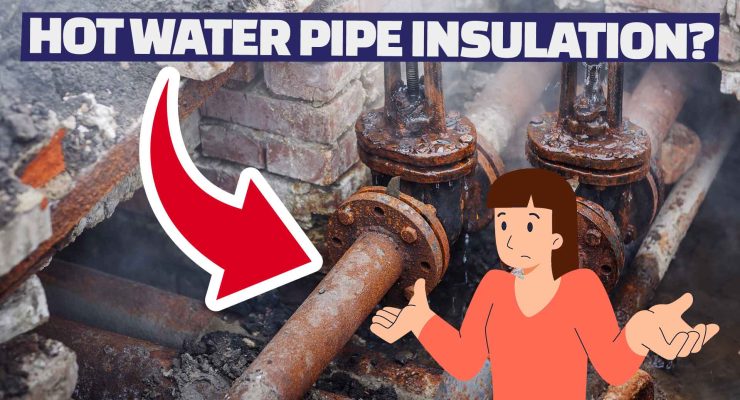Fast read
Solar hot water systems and solar energy for electricity are two types of renewable energy that use sunlight to generate heat or electricity.
Solar hot water systems use flat plate collectors or evacuated tubes to absorb sunlight and heat water. This then can then be used for household needs.
On the other hand, solar energy for electricity uses solar panels allowing the conversion of sunlight into DC energy. This is then converted into AC energy and used to power appliances. Both options offer benefits such as lower energy costs and carbon emissions.
The decision will be based on factors such as budget, roof space, and overall goals. Installing both systems is also possible if you have a spacious roof or a heat pump for hot water, leading to substantial energy savings.
Solar power vs solar hot water systems explained
Renewable energy is becoming more popular, leading to a growing demand for residential options that save on energy costs. For this reason, there are several alternative options to fossil-based energy consumption for homeowners who want to reduce their carbon footprint and costs. Two of these alternatives are solar power vs solar hot water.
Solar power is a common choice of renewable energy, especially in Australia. If this is the case for you, then you will be happy to know that solar can be used for energy production and heating in the forms of solar panels and solar water heaters.
Although they both work by absorbing sunlight, that’s where their similarities finish. In fact, they are vastly different products. So, who wins in the battle of solar power vs solar hot water?
How does solar hot water work?
Solar hot water has been available in Australia for over 50 years. Solar hot water has been in Australia for more than 50 years.
It became increasingly popular from 2005 to 2012. During this time, governments offered rebates to encourage the use of solar hot water systems. This was done to decrease reliance on coal-fired electricity and reduce carbon emissions.
Additionally, having a solar hot water system does reduce households’ electricity bills as the hot water replaces the electricity use of electric hot water tanks.
You can imagine the significant savings that could be created. Contrary to what many people think, solar hot water systems do not use traditional solar panels. Solar hot water panels, also known as collectors and solar electric PV panels, are entirely different.
Solar hot water systems use collectors or tubes on the roof to heat water with the sun’s heat. This hot water is then stored in an insulated tank for use when required in the home.
Evacuated tubes
Evacuated tubes are installed on your roof and are fused glass tubes that will form a vacuum with gas inside. A copper pipe runs across the top/end of these tubes through which water can flow.
The gas in the tubes absorbs heat from the sun and quickly heats. This heat is then transferred to copper tubes, which warm up cold water passing through them. The heated water is stored in a tank and can be used.
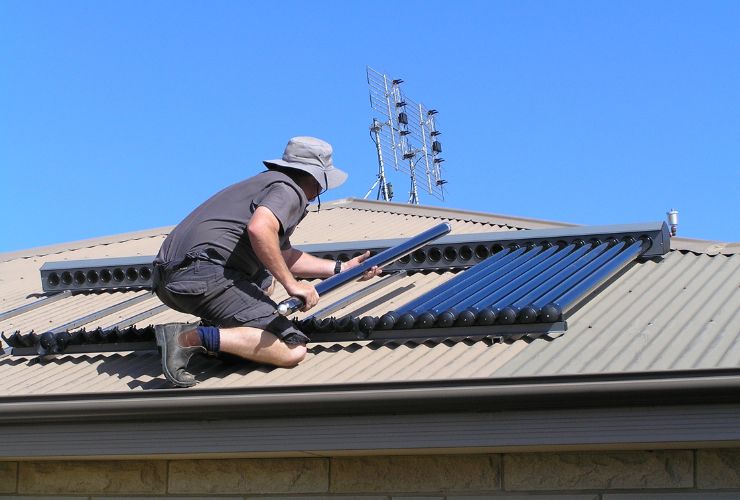
Flat plate collectors
Flat plate collectors are rectangular in shape and, like solar panels, are installed on your roof. They have a glass cover and a continuous length of copper pipe snaking through them, usually with a black plate behind them. The cold water flows through the tube and is heated by the sun as it flows through the panel and then flows to the insulated water storage tank for use when required.
PV panels generate electricity
The other way solar power can be utilised to reduce energy bills is through solar power systems featuring solar panels. Australia has one of the highest sun irradiations per m2 and one of the highest solar PV uptakes per home worldwide. With more than 35% of homes having solar panels installed in 2023,
Solar panels on the roof absorb sunlight, creating electricity. UV rays are absorbed by silicon cells, causing electrons to move within the panel. This, in turn, creates a current or electricity flow that accumulates through all the panels within the solar panel system.
Therefore, while both solar hot water and solar power panels use energy from the sun, they are significantly different in the way that they work.
Solar hot water uses the heat from the sun, whereas solar power panels use the energy from the light created by the sun.
Solar panels & heat pumps
With improving PV technology, solar hot water systems have become less popular, and heat pump hot water systems are becoming far more popular. While heat pumps use electricity, they are far more efficient than traditional electric element water heaters. Heat pumps use less than a quarter of the electricity of a conventional electric water heater by utilising refrigerants (similar to an air-conditioner) to take the heat out of the surrounding air to heat the hot water.
As a result of the efficiency of heat pumps and the valuable roof space required for hot water collectors on the roof for solar hot water, it is now seen that installing a heat pump is more efficient and beneficial than installing a solar hot water system.
The roof space that would be used only to heat hot water can now be used for solar power panels that can be used to both heat the water and also be used within the home for other applications. This includes charging an EV or selling it back to the grid.
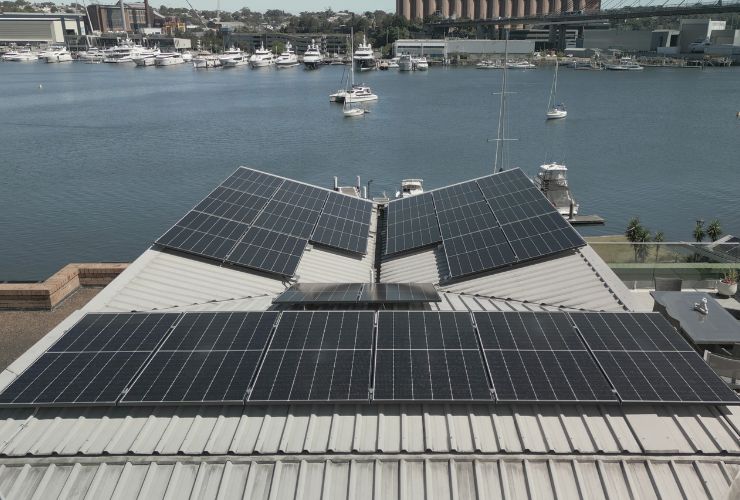
So what should I choose between solar hot water and solar power?
Both solar hot water heating and solar PV panels offer a number of advantages for your property. They can reduce your electricity bill as well as your home’s carbon emissions and provide eco-friendly electricity or water.
When deciding which system would suit your needs, make sure you take into account your budget, roof space and overall goals.
